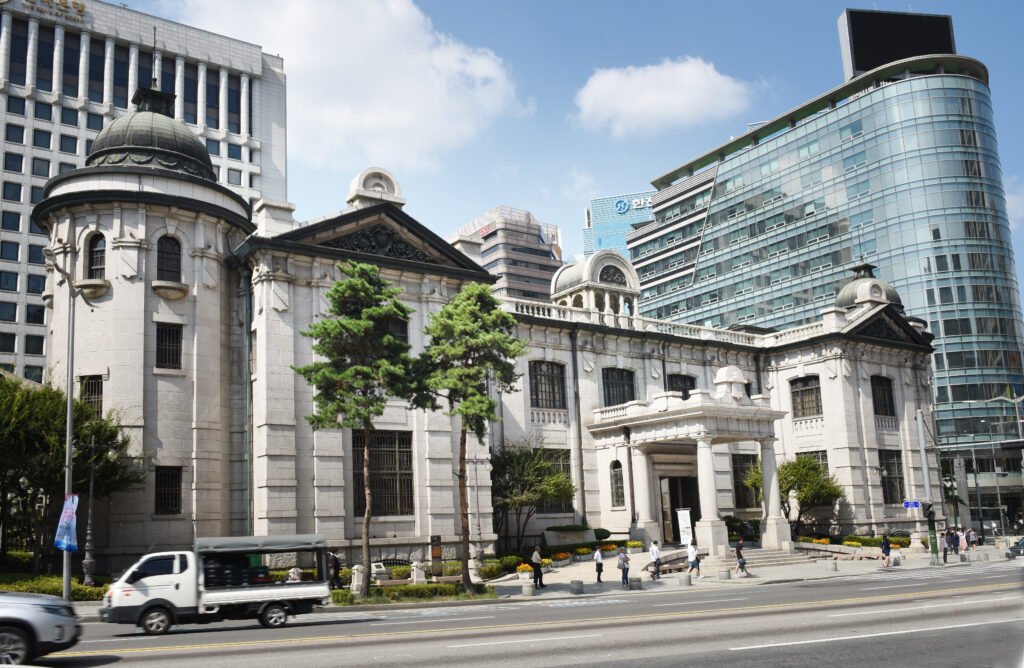
The Bank of Korea Money Museum opened on June 12, 2001, in commemoration of the 50th anniversary of the establishment of the Bank of Korea. Since its opening, the Money Museum has been a central bank museum representing South Korea in the heart of Seoul, receiving much love from many citizens.

Today, the Money Museum is taking strides as a global attraction, drawing in both local and international visitors. Throughout its history, the museum has continuously updated its exhibit spaces and curated diverse displays of currencies and collected art, enhancing the cultural experience for its guests.

The Bank of Korea’s Money Museum presents its core values as Creativity, Communication, Participation, and Responsibility. With creative pragmatism, it produces and shares information and knowledge related to currency. The museum also aims to inform the public about the functions and policies of the central bank and wishes to be with the citizens as a venue of open culture. Furthermore, it strives to adhere to its social role and responsibility.

Significance of the Money Museum Building
The Bank of Korea’s Money Museum is designated as a National Important Cultural Property (Historic Site). The Money Museum building, an early modern architectural edifice in our country, has a rich history intertwined with the financial chronicles of South Korea. In 1981, it was designated as a National Important Cultural Property (Historic Site).

Construction began in 1907 for the building to be used by Japan’s First Bank. However, by 1909, the Central Bank of the Korean Empire was established, and after its completion, the building was intended for use by the (former) Bank of Korea. During the Japanese occupation, the (former) Bank of Korea was renamed to the Bank of Joseon, and after the building was completed in 1912, it served as the main office for the Bank of Joseon.
The structure, styled in a Renaissance motif, is a two-story building with an additional basement level. It emphasizes functionality and robustness. When viewed from above, the structure has a shape resembling the character ‘井’, and when viewed from the front, it is symmetrically balanced around the main entrance. The reinforced concrete structure has an exterior finished in granite. The historical ambiance emanated by the building stems from the sturdy and substantial image the granite exudes. At the time of its erection, the interior flooring was wooden, the ceilings were finished in plaster, and a large safe was housed in the basement. Notably, this building was the first in the country to be fitted with an elevator.
On June 12, 1950, with the establishment of the Bank of Korea as the central bank of South Korea, this became the main office building for the Bank of Korea. During the Korean War, the interior was largely destroyed but was restored by 1958. In 1987, with the completion of a new extension (current main building) behind this building, restoration work to its original design commenced. The exterior was restored to its former state, but the interior was renovated with a modern marble finish, and by 1989, the work was completed. In 2001, commemorating the 50th anniversary of the establishment of the Bank of Korea, it was reopened as the Money Museum, and that designation continues to the present day.

Inside the Money Museum: Exploring Currency's Evolution and Authenticity
The Money Museum’s permanent exhibition is spread across two floors and consists of 13 exhibition rooms. Visitors can learn about the roles and functions of the Bank of Korea and the central banking system. In the exhibition hall detailing the life of currency, one can explore the processes of currency production and circulation, as well as methods to identify counterfeit and altered currencies. The Currency Plaza showcases not only the historical currencies of Korea, China, and Japan but also rare currencies from various countries around the world.

The museum holds an extensive collection that includes not only Korean and international currencies but also a variety of artworks such as Korean paintings, Western paintings, sculptures, and calligraphy. By collecting, preserving, researching, and exhibiting these diverse materials related to currency, finance, economics, and the arts, the museum strives to offer a vivid educational experience on monetary economics to many, including children and teenagers. While diligently preserving the characteristics of the building, which is a significant national cultural heritage, the museum aims to be a living institution where the past and the present coexist harmoniously.
Vị trí
Images from: 한국관광공사, https://www.kogl.or.kr/recommend/recommendDivView.do?recommendIdx=3146&division=img
